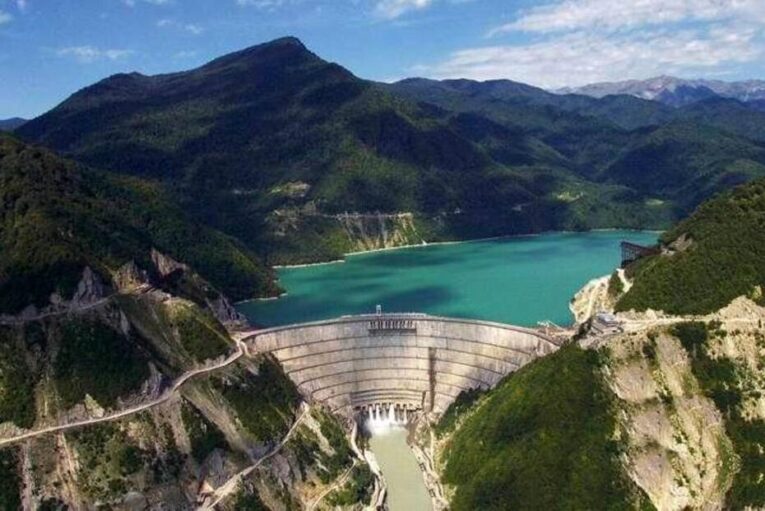Crisis Management Plan for the Construction Industry
- The state provides a 5-year subsidy of 4% of the mortgage loan interest rate. The grant is granted on loans of up to GEL 200,000.
- The state will provide a mortgage loan guarantee (up to GEL 200,000) equal to 20% of the loan amount for 5 years from the date of the loan. The guarantee applies to those loans in which the participation is at least 10%.
Both benefits apply to those who will take out a mortgage loan to purchase a new home between June 1, 2020 and January 1, 2021.
- The state provides a 5-year subsidy of 4% of the mortgage loan interest rate. The grant is granted on loans of up to GEL 200,000.
- The state will provide a mortgage loan guarantee (up to GEL 200,000) equal to 20% of the loan amount for 5 years from the date of the loan. The guarantee applies to those loans in which the participation is at least 10%. Both benefits apply to those who will take out a mortgage loan to purchase a new apartment between June 1, 2020 and January 1, 2021.
- The state will insure ongoing construction projects. In particular, the state will guarantee a purchase of up to 30% of the total living space within 3 years from the date of the guarantee.
- The state also plans to procure up to 1,800 apartments valued at GEL 150 million from May 1, 2020 to 2021.
As part of the aforementioned program, some of the apartments will be handed over to internally displaced persons.
The EU and the UN Development Program (UNDP), together with the Agency for Rural and Agricultural Development of Georgia, announced a grant program of GEL 9 million, which will promote the development of non-agricultural businesses, the creation of sustainable jobs, the sustainable management of natural resources and the To support climate protection.
Overall, the EBRD’s assessment has so far listed the good legal, customs and tax conditions as well as a sensible fiscal policy of the government as reasons for solid growth. The reopening of the Russian market for imports and exports and the expansion of Georgian-Azerbaijani and Georgian-Turkish relations are decisive factors for economic stabilization. Azerbaijan and Russia are the main buyer countries for Georgian products (2019: 13.2% each), Turkey (2019: 17.8%) and Russia (2019: 10.8%) the main supplier countries for Georgia.
In the course of the reform policy, the per capita income, which before 2008 and again in 2009 and 2010 averaged below 3,000 US dollars (GNI 2,860 USD – 2013), increased again. According to Statista, GDP per capita rose again to 4,428 dollars by 2014, after which it fell again. In 2016 it was 3,907, 2017: 4,047, 2018: 4,346, 2019: 4,289 US dollars and is estimated at 4,626 US dollars by GTAI for 2020.
According to ethnicityology, the gross average wages rose from 2014 to the end of 2017 only slightly from 348.6 to 377 euros per month. In the business sector excluding the financial and insurance sector, the social sector and the public service, the average wages were 938.3 (2016), 1,019.7 (2017) and 1,190.6 Lari in 2018 (1 euro: 2.6 Lari; as of 30. March 2020: 1 euro = 3.62 Lari – official exchange rate of the Georgian National Bank).
Economic growth : Growth of the “gross domestic product”: 2017: 15.1; 2018: 16.2; 2019: 15.9 *; 2020: $ 17.0 * billion . The website of Trading Economics provides a good overview of the development of various economic sectors in recent years. Here it becomes clear that the public sector with agriculture and construction are still the most important economic sectors in the country. An overview of the different branches of industry can be found at Invest in Georgia. After the full entry into force of the Association Agreement between the EU and Georgia. In July 2016, impulses for trade and economic cooperation were noted. However, there were no radical economic reforms, which not least led to the resignation of the government in May 2018 and demonstrations in 2019. However, the subsequent stabilization will not be sustainable due to the CORONA crisis. The volume of foreign trade of Georgia is less failed in the first half of 2020 by 18 percent than in the same period last year. Exports fell by 16 percent and imports by 19 percent
Unemployment (official *,%) 2008: 16.5; 2009: 16.9; 2010: 16.3; 2013: 15; 2017: 13.9 (unofficial expert estimates: 35-40%). The number of unemployed was officially stated for 2018 as still 12.7% (unofficially up to 40%; youth unemployment 32%) and that of the “poor” with 9, 7% (unofficially with 25%). Social dissatisfaction remains a permanent problem, especially in rural areas.
* The value does not include land owners who predominantly operate subsistence farming and are therefore “self-employed” from a Georgian point of view. The many day laborers, small traders and one-man entrepreneurs who live from hand to mouth are also not taken into account. Real unemployment and social problems are hardly reflected in the statistics.
Average wage (nominal, GEL / month): 2008: 543.9; 2010: 631.3; 2012: 743.5 2; 2016: 983.3; 2017: 1,067.6; 2019: 1,190.6. There are large income differences between the city (especially Tbilisi) and the countryside to be taken into account.
Government debt (% of GDP): 2016: 43.9; 2017: 44.9%; 2018: 44.9 *; 2019: 50.0 *; 2020: 52.0 *
Opportunities for further economic development arise primarily from the geopolitical location as a transport corridor for diversified energy supplies from Central Asia and Azerbaijan to Europe. The Baku-Tiflis-Ceyhan (BTC) oil pipeline and the Baku-Tbilisi-Erzurum gas pipeline (BTE, “South Caspian Pipeline” -SCP), which deliver energy resources from the Caspian region to Europe, run here. The future ” Southern Corridor ” gas transport corridor is also planned in parallel to these pipelines.
Source: GTAI (compact economic data); Geostat
The German Business Association in Georgia, which also regularly sends out a current newsletter, offers current business information.
